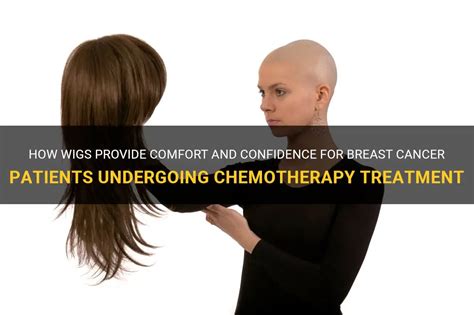Breast cancer is a journey that transforms lives in myriad ways. One often overlooked aspect of this experience is the impact on self-image, particularly for women who lose their hair due to chemotherapy. Wigs offer a sanctuary of confidence and comfort, restoring a sense of normalcy and empowerment during a challenging time.

Understanding the Need for Wigs
According to the American Cancer Society, over 85% of women undergoing chemotherapy experience hair loss. Hair is not merely an aesthetic attribute but an integral part of one’s identity. Losing it can be a profound emotional blow, leading to feelings of self-consciousness and anxiety.
Types of Wigs for Breast Cancer Patients
A wide range of wigs is available to cater to the diverse needs of breast cancer patients. Synthetic wigs are budget-friendly options that offer durability and ease of care. Human hair wigs are more costly but provide a natural appearance and can be styled. There are also specialized chemo caps designed to fit snugly under wigs, ensuring comfort and minimizing scalp irritation.
Choosing the Right Wig
Selecting the perfect wig is a personal journey. Consider these factors:
- Color and texture: Match the color and texture of your natural hair for a seamless blend.
- Length and style: Choose a length and style that complements your face shape and personality.
- Cap construction: Opt for a cap design that provides a secure and comfortable fit.
Wig Care and Maintenance
Proper care prolongs the lifespan of your wig and maintains its appearance. Follow these guidelines:
- Wash: Wash synthetic wigs with cool water and gentle shampoo. Human hair wigs require a special shampoo and conditioner.
- Dry: Allow wigs to air dry or use a low heat setting on a hair dryer.
- Style: Use minimal heat when styling wigs. Avoid harsh chemicals and bleach.
- Store: Store wigs on a wig stand or in a box to prevent tangles and damage.
Beyond Wig-Wearing: Emotional Support
Wigs provide practical benefits, but they also offer emotional solace. They can:
- Boost self-confidence: A well-fitting wig can restore a sense of normalcy and boost self-esteem.
- Reduce anxiety: Wigs can alleviate worries about hair loss and its impact on social interactions.
- Promote a positive body image: Wigs empower women to feel comfortable and attractive in their own bodies.
Resources and Support for Breast Cancer Patients
Numerous organizations provide resources and support to breast cancer patients:
- American Cancer Society: Offers wig banks and financial assistance for wig purchases.
- Look Good Feel Better Foundation: Provides free wig workshops and beauty supplies to women undergoing cancer treatment.
- Wellness Community: Hosts support groups and offers services such as wig fittings and counseling.
Conclusion
Wigs for breast cancer patients are more than mere hairpieces. They are a symbol of hope, confidence, and self-empowerment. They provide a veil of normalcy during a turbulent time, allowing women to focus on their journey with dignity and strength.
Frequently Asked Questions
Are wigs covered by insurance?
In some cases, wigs may be covered by insurance under medical necessity. Consult your insurance provider for specific eligibility criteria.
How long do wigs last?
The lifespan of a wig depends on the material and care. Synthetic wigs typically last 6-12 months, while human hair wigs can last several years with proper maintenance.
Are wigs uncomfortable?
Modern wigs are designed to be comfortable and fit snugly on the head. Proper cap construction and sizing are crucial for a comfortable fit.
How can I find a wig that matches my natural hair?
Visit a wig store or consult with a wig specialist for personalized assistance in matching your wig’s color, texture, and style to your natural hair.
Additional Tips:
- Experiment with different wig styles: Don’t be afraid to try on various wigs to find the one that suits you best.
- Seek professional hair consultation: A hairstylist can provide guidance on wig selection and styling techniques.
- Join support groups: Connect with other women who have undergone hair loss to share experiences and resources.
